JQ Magazine: Book Review — ‘Starting Point: 1979-1996’ by Hayao Miyazaki
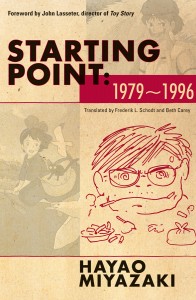
“For those who enjoy the process and precision behind an art, Starting Point is a rare glimpse into an often-times enigmatic industry.” (VIZ Media LLC)
By Alexis Agliano Sanborn (Shimane-ken, 2009-11) for JQ magazine. Alexis is a graduate student of Harvard University’s Regional Studies—East Asia (RSEA) program, and currently works as an executive assistant at Asia Society in New York City.
Starting Point: 1979-1996, translated by Beth Cary and Frederik L. Schodt, is quite unlike its sequel, Turning Point: 1997-2008 (read JQ’s review here). Technical rather than creative, Starting Point shares renowned director Hayao Miyazaki’s recollections of his early days as an animator. The essays and interviews follow anime through production development, touching on the intricacies of character design, layout, and story adaptation. For those who enjoy the process and precision behind an art, Starting Point is a rare glimpse into an often-times enigmatic industry.
The first half of the work features essays on Miyazaki’s long hours in the studio, culture, and nature of Japan’s animation industry in the 1960s and 1970s. As Miyazaki notes, even then, anime was tied to media mix marketing. You didn’t just have manga; you had manga, then an anime, toys, merchandise, and spin-offs all fueling off each other. Says Miyazaki in a 1982 interview: “The world of anime makes its business out of themes like departing for new horizons or love, while pretending not to be conscious of [the] commercial reality.” In hindsight, these remarks prove ironic; the auteur’s Studio Ghibli having similarly succumbed to commercialization.
It isn’t just media mix that remains the same today: professional frustrations were high and work-life balance poor. Miyazaki, over the course of several essays, recounts the life of a young professional. He states: “When young, nearly all of us want to be taken seriously, as soon as possible….In fact, many of those who have not yet taken the plunge into the professional world…tend to speak endlessly about techniques, or concentrate on gaining as much knowledge as possible….In reality, however, once you enter this industry, the techniques required can be mastered very quickly.”
Getting Unstuck: How To Turn Your Dreaming Into Doing
Jonathan Bissell (Chiba-ken, 1995-2000) is the author of Dream in Color, Think in Black & White: How to Get Unstuck and Fulfill Your Dreams. He is also the CEO of High Performance Impact, LLC, an executive coaching firm helping proven and emerging leaders to identify and consistently leverage patterns of high performance.
You’re a writer and you have a book inside you, but it doesn’t know how to get out.
Here are 3 simple steps to begin getting your book out of your head and where it belongs, on paper.

3 Simple Steps To Begin Writing Your Book:
- STEP #1: Write Your Introduction. Writing begins with…writing. It sounds silly, but just sitting down to write is the one simple step that many people never take. So take it. Grab a paper and pen, or your laptop, and sit somewhere comfortable. Now imagine we’re sitting there together, and I ask you to tell me about your book. “What’s your book about?” I ask you. Now write or type your answer. That’s it. Just tell me about your book. If it’s helpful, try to answer questions such as Who, What, When, Where, Why and How. Once you’re finished, you’ll have created the Introduction to your book! Now on to step #2.
Continue reading here.
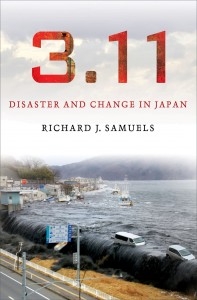
“Samuels draws from historical precedents and a rich and meticulously researched source material, as well as his extensive experience as a long-time observer and commentator on Japan, to produce a compelling and thought-provoking attempt to examine the true impact of the 3.11 disaster.” (Cornell University Press)
By Eden Law (Fukushima-ken, 2010-11) for JQ magazine. Eden currently serves on the JETAA New South Wales committee in Sydney, Australia as the online social media, webmaster and occasional editor. Got feedback? Leave a comment below.
The natural and man-made disaster of the 2011 Tohoku earthquake provoked an intense and visceral response from within and without, which saw an unprecedented level of cooperation between allies and between former enemies, and a united outpouring of human generosity and spirit globally. Little wonder then, that the usual cynical rhetoric was replaced with wholly credulous proclamations of a new age that could be an economic, technological, political and social rebirth of a nation.
“We expect a lot from crises,” author Richard J. Samuels notes in 3.11: Disaster and Change in Japan’s preface, and confesses to have himself been caught up in that same wave of optimism. What would the actual consequences be from the disaster? Would it bring a new era of “revival,” one of a number of slogans touted around Japan in the months following 3.11, or would the goodwill and its accompanying momentum evaporate in the face of reality that brings with it the problems of coping and dealing with a humanitarian disaster?
Samuels draws from historical precedents and a rich and meticulously researched source material, as well as his extensive experience as a long-time observer and commentator on Japan, to produce a compelling and thought-provoking attempt to examine the true impact of the 3.11 disaster. Starting with a description of the state of Japan around the time of the event, he describes a country in the economic doldrums, far from its position that it occupied decades earlier as an economic powerhouse that was the envy (and fear) of the developed world. Politically, Japan’s government had become a circus of ever-changing prime ministers, resulting in low public confidence in its leaders. Little wonder, then, that when the calamity of March 11th struck, the expectation and need for change seemed especially urgent and indeed, possible, more than at other time in recent Japanese history.

“Hopefully the lines between my actual experiences and pure fiction are seamless. When readers ask me, ‘Is this part true?’ they seem surprised by the answers. So that makes me happy—the fiction is believable and sometimes the outrageous is the truth.” (Courtesy of William Fraser)
By Rafael Villadiego (Nagasaki-ken, 2010-13) for JQ magazine. A member of JETAA New South Wales, Rafael is a collector of words on a journey still searching for a destination, who has a tendency to forget, we are all sometimes like the rain…
Laurie Fraser (Osaka-fu, 1997-98) is a writer and traveler who married a Kurd in Turkey in the 1990s. The experience inspired The Word Not Spoken, semi-autobiographical debut novel that blurs the line between reality and fiction, casting light on a tumultuous period in history through the eyes of those who experienced it firsthand.
The conflict between the PKK [Kurdistan Workers’ Party] and the Turkish Armed Forces has its roots in the First World War and continues to have repercussions for the region to this day. But beyond these grand struggles are the quiet moments in between: The ordinary challenges and trivial frustrations of everyday life, and the more overarching issues of culture and religion, which Fraser approaches with a genuine curiosity and gentle humor that forms the emotional core of her book.
An extensive traveler to a number of different countries across the globe, Fraser has experienced life in the broadest context before eventually finding her way “home.” Now a teacher and healer in Ottawa, JQ caught up with her to discuss the events of her life that inspired the novel and how they contrasted with her time on the JET Program.
What led you to first write this novel, and why did it take so long for the finished work to see light?
The scene where Ahmet and Leigh meet a group of destitute Kurdish refugees is exactly true, except that it happened in 1996, not 1995. I decided then to write a book and tell their story in a way that wasn’t “bad news.” At that time, my husband believed that the world would never hear about the Kurds if the PKK wasn’t setting off bombs. I recognized that as a Canadian, I had a right that he did not—the right to free speech.
I am a poet at heart, and I found a novel to be unwieldy to say the least. I had the poet’s need to touch every word over and over—so that slowed me down.
The Word Not Spoken was refused by countless publishers—I had a stack of rejection letters collected just in the year I was in Japan. It did well in a Canadian national writing contest in 2000, but only the winner was published. I was incapacitated with illness for a few years, but I eventually did a huge rewrite in 2010-11 with a professional editor. The manuscript did get better and better over the years, but it wasn’t until self-publishing became accessible and respected that I finally decided to go for it on my own.
I promised those refugees and my husband (who was killed in 1997) that I would publish their stories and really, it was a stone in my stomach for 18 years.
Kurdish House in Vancouver flew me out there (from Ottawa) to read to a large Kurdish audience this past spring. Afterwards, men and women came to talk to me: “I lived in one of those tents for four years.” “I was tortured 45 days.”
I have been haunted by the refugees I met living in those tents in 1996. I couldn’t imagine how any of them would have survived. These Vancouverites were an affirmation of life—some of them had made it! Some of them would have been children in 1996…and here they were! All I could say was, “I’m so glad you got here. I prayed for you.” And indeed, I wrote a book for them.
JET alum publishes book on getting unstuck: “Dream in Color, Think in Black & White”
 Jonathan Bissell (Chiba-ken, 1995-2000) has written a “how-to” guide to getting unstuck and pursuing your life or career dreams. A timely topic as many JETAA chapters are hosting career forums over the next few weeks. His book, entitled “Dream in Color, Think in Black & White: How to Get Unstuck and Fulfill Your Dreams” is now available on Amazon in both Kindle and paperback. For complete details visit amazon.com/author/jonathanbissell.
Jonathan Bissell (Chiba-ken, 1995-2000) has written a “how-to” guide to getting unstuck and pursuing your life or career dreams. A timely topic as many JETAA chapters are hosting career forums over the next few weeks. His book, entitled “Dream in Color, Think in Black & White: How to Get Unstuck and Fulfill Your Dreams” is now available on Amazon in both Kindle and paperback. For complete details visit amazon.com/author/jonathanbissell.
Description:
The world is filled with dreamers, but it’s owned by people who do. Yet too many dreamers are stuck, unhappy and unfulfilled in their life or career. They don’t know how to move forward or what to do next. Dream in Color, Think in Black & White is a focused and powerful book that provides practical and encouraging step-by-step guidance for dreamers everywhere who want to get unstuck and fulfill their dreams, but don’t know how.
Introduction:
Admit it. You’re stuck. Somewhere along the way, you had a dream that you let go of. But it hasn’t let go of you. You’re the reason this book was written. Because dreams matter. Dreams are powerful. And sometimes dreams just won’t go away – no matter how impractical, ill-timed or financially risky they are.
This is a book about getting unstuck in your life or career. It’s about learning to Dream in Color and Think in Black & White. There are three parts to this book: Dreaming in Color, Thinking in Black & White, and Fulfilling Your Dreams. Each part contains practical “how to” steps and examples explaining how to get unstuck and move toward your dream. The rest is up to you. Let’s get started.
Early Responses to Dream in Color, Think in Black & White:
“a superb must-read…a roadmap of balance and success”
Chaya Abelsky, Master Certified Coach, Principal at Triumphant Journeys LLC and Director of the NonProfit HelpDesk.
“powerfully written…compels you into creating a plan”
Jane A Creswell, Master Certified Coach, founder of IBM Coaches’ Network, CEO of iNTERNAL iMPACT, LLC, and the author of two books.
“a how-to guide for anyone seeking career and personal fulfillment”
Luther Jackson, Board Member, American Leadership Forum – Silicon Valley.
JQ Magazine: Book Review — ‘WA: The Essence of Japanese Design’

“WA is an excellent reminder that the analysis of everyday objects in our lives can be more insightful than we might first think, examining the roles of myriad mediums in Japanese daily life in ancient times to today including practical uses, religious ones, and political statements.” (Phaidon)
By Julio Perez Jr. (Kyoto-shi, 2011-13) for JQ magazine. A bibliophile, writer, translator and graduate from Columbia University, Julio is currently working at Ishikawa Prefecture’s New York office while seeking opportunities with publications in New York. Follow his enthusiasm for Japan, literature, and board gaming on his blog and Twitter @brittlejules.
Whether you like looking at furniture, crafts, art, and everything in between, in museums, magazines, or even Pinterest, you’re sure to appreciate the awe of a magical table, that from some angles is almost invisible, not to mention the rustic austerity of handmade materials for the Japanese tea ceremony and many other fascinating objects featured in WA: The Essence of Japanese Design. Throughout history, design and craftsmanship have had important roles in everyday life and practical uses, as well as in the arts and even in the political arena. WA explores the changing faces and development of Japanese design through the mediums themselves.
The book is divided into sections that include: Wood, Bamboo and Lacquer, Paper, Metal, Fabric and Textiles, Ceramic, and Synthetic/New Materials. Each section features a few dozen stunning photographs of objects, crafts, or even furniture, and a short essay that highlights pieces made from a particular material that, along with the photos, support its discussion about the development of that medium in Japan in a manner approachable for all readers. The contents of the book are written and selected by Rossella Menegazzo and Stefania Piotti, who are both scholars of East Asian arts and crafts, and they have successfully created a beautiful, approachable book on the subject.
WA explores the Japaneseness of Japanese design that has evolved throughout its history of ancient influences, from continental Asia and the Silk Road, through Japan’s periods of isolation, and continuing through today with its integration and innovation of Western design and cultural needs. WA is a very approachable book; the essays are not heavy with jargon and relate more to the pictures, which provides a very special and immediate connection to Japanese arts that would only be rivaled by holding the items themselves featured in the photos.
JQ Magazine: Book Review – ‘Colorless Tsukuru Tazaki and His Years of Pilgrimage’ by Haruki Murakami
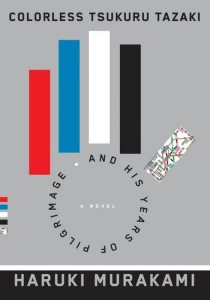
“Tsukuru Tazaki is more akin to a collection of related experiential pieces on existentialism rather than a straightforward story, which is why sometimes it can feel incomplete and unexplained. But there is a certain pleasure to be had from reading Murakami’s descriptive text, as he unhurriedly takes his time in building a backdrop by utilizing bits and pieces of asides and ephemera.” (Knopf)
By Eden Law (Fukushima-ken, 2010-11) for JQ magazine. Eden hails from the JETAA New South Wales chapter in Sydney, Australia, aging one hour at a time, his soul still empty, on the slow gentle slide to the eternal sleep of the grave. With the wind in his hair and a song in his heart, of course.
Haruki Murakami is a rare, superstar author who can engender the kind of excitement and anticipation more often seen with pop and movie idols. His latest novel, Colorless Tsukuru Tazaki and His Years of Pilgrimage, sold over a million copies in Japan in the first week, and overseas, the reception has been no less enthusiastic, with its release celebrated by midnight openings of bookstores with breathless fans queuing with anticipation.
Since its debut in English, the novel has topped the New York Times best sellers hardcover fiction list. As befitting such a book, it comes in a handsome dust jacket and cover designed by Chip Kidd, heavy with symbolism in blocked color bars and Japanese train routes peeking through plastic windows. Not all international covers for the book were created equally—check out this Tumblr gallery of all its international permutations, if you’re curious. It would seem that one doesn’t just read a Murakami novel; one experiences it.
I fully intended that last sentence to be facetious, but having finished the book, I’m not so sure I’m too far off the mark. In Tsukuru Tazaki, the author skillfully creates a world where characters are connected to each other by the most tenuous of relationships, gossamer-thin and fragile. For our eponymous protagonist, the most important relationship of his life—that with the only group of friends he has ever had—is suddenly and inexplicably severed, and he finds himself banished without explanation, causing a kind of spiritual trauma.
JQ Magazine: JQ&A with John Gaunter on ‘Sake Confidential’

“Sake is so deep and varied that one could never stop talking about it. Every day is full of surprises. Not major ones, but usually surprises related to the attention to detail that goes into sake and the interesting stories behind it.” (Courtesy of John Gauntner)
By Eden Law (Fukushima-ken, 2010-11) for JQ magazine. Eden is a JETAA New South Wales committee member, who would like it to be known that if it wasn’t for getting involved with JETAA, he wouldn’t know what to do with his spare time after hours. JET: It’s like the Illuminati, except less about the world domination and more about the fun denomination. Got feedback on this article? Leave a comment below.
If ever there was a prize for most unexpected job opportunity spin-off from the JET Program, the career of John Gauntner (Kanagawa-ken, 1988-89) would be hard to beat, especially after a few rounds of nihonshu. A longtime resident of Kamakura and the world’s first (and only) non-Japanese to hold certification as both a Master of Sake Tasting and Sake Expert Assessor, Gauntner has come a long way since a drinking session with a buddy from The Japan Times led him to this series of fortunate events.
Proving that this beverage continues to be an infinite font of inspiration, Gauntner has recently added a new book to his growing stable of literary output, Sake Confidential: A Beyond-the-Basics Guide to Understanding, Tasting, Selection, and Enjoyment. In it, he covers all aspects of the precious drop: from what it is, how it is made, and how it is meant to be enjoyed (spoiler: any way you like it), to the inside story of its politics, marketing, and the industry itself. But this is no textbook: Like a true sake evangelist, Gauntner enlightens beginners and insiders alike, pairing clear and simple language with confidence and unabashed passion.
In this exclusive interview, Gauntner discusses the state of sake’s popularity in its own country and abroad, what it means being a non-Japanese sake evangelist with his unique qualifications, and what the future holds for him.
What was the reason behind writing this book, and who is its audience?
I wanted to show the depth and breadth of the sake world, to show it has as many avenues for exploration as wine does.
How is this book different from the others?
This book goes beyond the basics and more into depth about many interesting side topics of the sake world.
Is this book designed to replace or update your previous books?
No, it is intended to augment them. This one introduces less sake and is light on the basics,
What’s the market like for these books?
So far it is selling well, but ask me in two years!
What’s left to be said about sake? Are there any surprises left in the industry?
It is so deep and varied that one could never stop talking about it. Every day is full of surprises. Not major ones, but usually surprises related to the attention to detail that goes into sake and the interesting stories behind it.
Posted by Tom Baker (Chiba, 1989-91)
Claire Dawn-Marie Gittens (Iwate, 2008-2103) will present “Voice-Training: Making your Words Sing,” a two-hour workshop, at the 2014 Japan Writers Conference. The conference is a free event open to all English-language writers. This year, it will be held on Oct. 25-26 in Morioka, Iwate Prefecture. For complete details, visit http://www.japanwritersconference.org. Meanwhile, here’s the official description of Claire’s workshop:
 Filled-in plot holes. 3D characters. Realistic settings… But something’s missing. That je-ne-sais-quoi that has puzzled aspiring and accomplished writers alike. Voice. In this workshop, we will examine different voices, define voice in our own words, and hear the thoughts of the experts. Then we will attempt to make our own voices sing.
Filled-in plot holes. 3D characters. Realistic settings… But something’s missing. That je-ne-sais-quoi that has puzzled aspiring and accomplished writers alike. Voice. In this workshop, we will examine different voices, define voice in our own words, and hear the thoughts of the experts. Then we will attempt to make our own voices sing.
Before defining voice, we will listen to a few extracts from different types of voices in different genres. We will discuss the feelings and thoughts these voices evoke. Then, with these voices in mind, we will attempt to define voice. After listening to definitions
from our colleagues, we will hear the thoughts of authors of books on writing craft. Finally, we will do a few short writing segments, aiming to embody different voices using the same character, plot, and setting.
Claire Dawn was such an avid reader as a child that she literally would not put down her book. Her piece ‘Ichinichi on the Yamanote’ can be found in TOMO: Friendship through Fiction. Her work has also appeared in magazines, anthologies, and newspapers, including Japan Times Shukan ST. Born in Barbados, her heart also belongs to Ichinohe, Iwate.
JQ Magazine: Book Review — ‘Japan 365: A Drawing-A-Day Project’
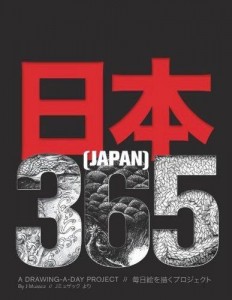
“Using nothing more than the simplest tools at hand to capture the moment, the artist establishes a tangible reality that lends an urgency and authenticity to the work that would not be possible in a more polished and composed form.” (J Muzacz)
By Rafael Villadiego (Nagasaki-ken, 2010-13) for JQ magazine. A member of JETAA New South Wales, Rafael is a collector of words on a journey still searching for a destination, who has a tendency to forget, we are all sometimes like the rain…
“If you attach a reason to an adventure, it ceases to be one.” –Uemura Naomi, noted Japanese mountain climber and adventurer.
「冒険に理由をつけると、冒険でなくなってしまう。」植村直己
There is something timeless and romantic about the idea of the wandering artist. Drifting aimlessly down untrodden roads and stumbling across hidden paths. Going wherever the wind might take them and all the while sketching random scenes from daily life, in all its raw and unfettered glory.
Japan 365: A Drawing-A-Day Project by current Melbourne resident J Muzacz (Kyoto-fu, 2010-12) is a drawing-a-day project that sets out to capture this sense of artistic wonder, in a fitting meditation on contemporary Japan. A black-and-white reproduction of sketches produced with nothing more than a simple ballpoint pen and notebook, the project sets aside all pretension and gaudy artifice and pares everything down to its barest essentials and fundamental simplicity. It is especially gratifying to see some pieces scribbled on the back of old pieces of paper or second-hand timetables. Using nothing more than the simplest tools at hand to capture the moment, the artist establishes a tangible reality that lends an urgency and authenticity to the work that would not be possible in a more polished and composed form.
While by no means an artist myself, there is something to be said about living the dream: An errant dreamer recording the world as they see it unfold. However, such whimsical fancy fails to fully appreciate the hard work and dedication inherent to such an undertaking. Consciously choosing to actively produce a completed work of art, every single day, for a solid year, is no mean feat. Having it ultimately culminate into such a hefty tome worthy of sitting comfortably on any coffee table or bookshelf, and feeling the solid weight of it all in your hands, is nothing short of remarkable. Artist/writer Muzacz and his supporters must be heartily commended for seeing it to fruition.
JQ Magazine: Book Review — ‘Year Zero: A History of 1945’
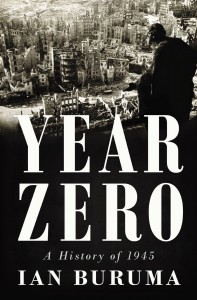
“Though so many of the complexities of World War II and ensuing changes can not easily be summarized, Buruma’s analysis of 1945 provides several enlightening answers that begin to answer the question of how and to what degree a sense of normalcy is achieved after destruction.” (Penguin Press)
By Sheila Burt (Toyama-ken, 2010-12) for JQ magazine. Sheila is a scientific writer at the Center for Bionic Medicine at the Rehabilitation Institute of Chicago. Read more of her writing at her blog.
Consider the following historic events: the bombings of Dresden begin; Franklin D. Roosevelt dies after serving 12 years as president; the B-29 bomber Enola Gay drops “Little Boy” on Hiroshima followed days later by “Fat Man” on Nagasaki, resulting in hundreds of thousands of deaths, unprecedented instant destruction, and long-lasting illnesses caused by radiation exposure; after six long, bloody years, the Second World War finally ends.
Now consider that all of these events took place in 1945.
Following these milestones in the span of only a few months, how could countries so deeply entrenched in World War II return to any sense of normalcy? How do you rebuild a broken nation?
Author and journalist Ian Buruma explores these questions and postwar disorder in his latest book, Year Zero: A History of 1945.
Writing about a single year (or several months within a single year) is not new—among a few other examples, Bill Bryson recently covered the summer of 1927 in One Summer: America, 1927; in 2010; cultural critic Fred Kaplan analyzed the significance of 1959 in his book 1959: The Year Everything Changed; and in 2005, Mark Kurlansky declared 1968 as The Year that Rocked the World.
For Buruma, a Luce Professor of Democracy, Human Rights and Journalism at Bard College and the author of several books, including the novel The China Lover, 1945 may not be more significant than other years but one of the most groundbreaking for transformations. Rather than focusing on the postwar efforts of a single country, Buruma looks at the countries destroyed or nearly destroyed by the ferocity of World War II, specifically narrowing in on the postwar chaos and change in Europe and Japan. “How did the world emerge from the wreckage? What happens when millions are starving, or bent on bloody revenge?” he asks in the prologue.
JQ Magazine: Manga Review — ‘Showa 1939-1944: A History of Japan’
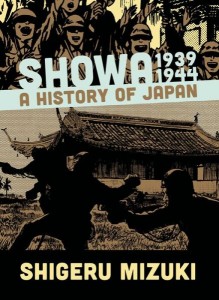
“Showa is an enjoyable book to read, and this volume in particular will appeal to those interested in World War II and comprehensible narratives of the political and military intrigue of the time.” (Drawn and Quarterly)
By Julio Perez Jr. (Kyoto-shi, 2011-13) for JQ magazine. A bibliophile, writer, translator, and graduate from Columbia University, Julio is currently working at Ishikawa Prefecture’s New York office while seeking opportunities with publications in New York. Follow his enthusiasm for Japan, literature, and board gaming on his blog and Twitter @brittlejules.
School might be out, but that doesn’t mean your educational summer reading can’t be fun. Welcome to part two of Shigeru Mizuki’s manga history of Japan during the Showa period! If you’re just tuning in or need a refresher, check out JQ’s review of the first book, Showa 1926-1939: A History of Japan. This series is translated beautifully in English by none other than JET alum Zack Davisson (Nara-ken, 2001-04; Osaka-shi, 2004-06) and published in North America by Drawn and Quarterly.
Illustrious manga artist Mizuki continues his retelling of the Showa period through his mouthpiece character Nezumi-Otoko (sometimes translated as Rat Man) of GeGeGe no Kitaro fame, and in this section includes events you have no doubt heard of such as the attack on Pearl Harbor and the Battle of Midway as well as ones you probably have not such as the Japanese campaign in the Dutch East Indies and the Battle of the Coral Sea, the first true incident of carrier warfare and air-to-air combat.
Mizuki also inserts his own autobiographical story into narrative, providing both a macro historical view and micro personal view of the war. As established in the previous volume, he has portrayed himself in a pretty poor light from the get-go, a good for nothing son that is too lazy to hold a job, can’t properly attend any school, and only seems to have a strong interest in eating as much food as possible. But the humble and comical portrayal of himself should be taken with a grain of salt, as Mizuki points out himself, in this era, “If we had a little food in our bellies, it was considered a blessing….We didn’t think about the future because we didn’t have one. Hard times at home were just the tip of the iceberg. After that there was the army, where all your future holds is an unmarked grave on a godforsaken island.”
JQ Magazine: Book Review — ‘A True Novel’
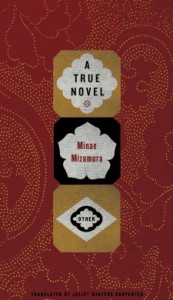
“A True Novel remarkably depicts the sense of isolation that anyone who has lived abroad or moved to a new place experiences. It captures the very human and conflicted desires to simultaneously fit into a society while also desiring to rebel against its impositions.” (Other Press)
By Julio Perez Jr. (Kyoto-shi, 2011-13) for JQ magazine. A bibliophile, writer, translator, and graduate from Columbia University, Julio is currently working at Ishikawa Prefecture’s New York office while seeking opportunities with publications in New York. Follow his enthusiasm for Japan, literature, and board gaming on his blog and Twitter @brittlejules.
This is the story of a poor boy that had the misfortune to fall in love with a rich girl. A classic Gothic tale of romance transplanted and re-imagined in postwar Japan. If you like your lovers star-crossed and your antiheroes of the rags to riches variety, then you’re in for a treat with Minae Mizumura’s A True Novel. Winner of the Yomiuri Literature Prize in 2002, A True Novel is a book filled with familiar themes executed in interesting new ways. It is a re-imagining of Emily Brontë’s Wuthering Heights in postwar Japan, with parallels among some characters, but different enough to be original and uniquely Japanese.
A True Novel is a unique and engrossing tale that brings together three seemingly unrelated characters who are united not only by a resigned sense of isolation from their surroundings but also united in their encounters and fascination with the book’s protagonist, Taro Azuma. The focus of the novel is the story of his tragic youth, a poor boy who falls in love with a rich girl, and his growing awareness that he would always be incompatible with her in the eyes of others. He flees to America, where he claws his way up from the dregs of society and overcomes the obstacles of class and wealth to become one of the richest Japanese men of his time. While we learn about his fascinating life through the three different viewpoints of the characters with their sometimes humanly biased perspectives, the book also gives insight into the complex identities of the uprooted lives of immigrants and refugees both in Japan and in America, as well as how attitudes toward them have changed over time. A True Novel remarkably depicts the sense of isolation that anyone who has lived abroad or moved to a new place experiences. It captures the very human and conflicted desires to simultaneously fit into a society while also desiring to rebel against its impositions.
Mizumura has masterfully brought to life narrators and characters from different generations, countries, and social classes, and provides fascinating insight into their lives during different periods of Japanese history. From the bleak years of Imperial Japan’s home front during the Pacific War, and the humbling postwar period, through its modern economic success, and finally to the bubble burst and recent events, Japanese modern history comes alive in an intimate and immediate way that inspires new appreciation and curiosity for the human side of history.
JQ Magazine: Book Review—‘Cinema of Actuality’

“Artists often make great sociological commentators, and Furuhata’s book sheds new light on the insights of these filmmakers.” (Duke University Press)
By Lyle Sylvander (Yokohama-shi, 2001-02) for JQ magazine. Lyle has completed a master’s program at the School of International and Public Affairs at Columbia University and has been writing for the JET Alumni Association of New York since 2004. He is also the goalkeeper for FC Japan, a New York City-based soccer team.
Yuriko Furuhata’s Cinema of Actuality: Japanese Avant-Garde Filmmaking in the Season of Image Politics examines a turbulent and disruptive period in Japanese history. As in other areas of the world, Japan in the late 1960s-early 1970s marked an era of youthful rebellion against the establishment, in both its public and private spheres. Furuhata’s analysis examines this period through the alternative Japanese film movements going on at the time, from New Wave figures like Masahiro Shinoda, Yasuzo Masumura and Hiroshi Teshigahara, to avant-garde filmmakers like Toshio Matsumoto and Kiyoteru Hanada. However, most of the films studied in the book are by Nagisa Oshima, largely considered to be the father of the Japanese New Wave and the “Jean-Luc Godard of Japan.” By eschewing the more traditional tendencies of the directors from Japan’s Golden Age such as Akira Kurosawa, Kenji Mizoguchi and Yasujiro Ozu, these directors incorporated such formalist experiments as jump cuts, disjointed angles, shaky handheld camerawork, pop music and, most importantly, the inclusion of television news footage.
Since many of these directors were relatively young, they shared the political sensitivities of the student protesters, who sanguinely staged media events to garner attention. The “season of politics” era was prominently displayed in nightly television newscasts, which covered a wide spectrum of politically disruptive events, from hijackings to hostage crises to mass student rallies and protests. The aesthetics of this new generation of film appropriated this contemporary media coverage in attempt to both reflect and critique it. By converging with other media cultures, these filmmakers engaged in a theory-filled dialog with the nature of representation itself, in effect becoming simultaneously media practitioners as well as theorists/critics. By making this powerful argument, Furuhata—an Assistant Professor of McGill University’s Department of East Asian Studies and World Cinema Program—forcefully disputes film scholar Noël Burch’s often-quoted notion that Japan was a cinema culture devoid of theory and serious study.
JQ Magazine: Book Review — ‘The Guest Cat’
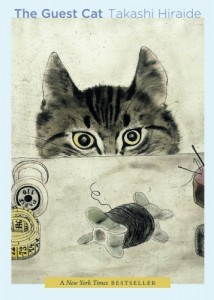
“This is one of many books that you simply cannot judge by its cover. At only 140 pages, The Guest Cat touches on a surprising range of interesting topics, and even if you’re not a cat person you can find a lot to like.” (New Directions)
By Julio Perez Jr. (Kyoto-shi, 2011-13) for JQ magazine. A bibliophile, writer, translator, and graduate from Columbia University, Julio is currently working at Ishikawa Prefecture’s New York office while seeking opportunities with publications in New York. Follow his enthusiasm for Japan, literature, and board gaming on his blog and Twitter @brittlejules.
Born in 1950, Takashi Hiraide is a talented writer across many fields including genre-bending essays and highly acclaimed poetry. His prose novel The Guest Cat (translated by Eric Selland) blends both together to produce a beautiful piece that was released in English last January. It is a winner of Japan’s Kiyama Shohei Literary Award and is a best-seller in France. This is one of many books that you simply cannot judge by its cover. At only 140 pages, it touches on a surprising range of interesting topics and even if you are not a cat person, you can find a lot to like in the book. Even the narrator admits that he does not consider himself a cat lover:
“There are a few cat lovers among my close friends, and I have to admit that there have been moments when that look of excessive sweet affection oozing from around their eyes has left me feeling absolutely disgusted. Having devoted themselves to cats body and soul, they seemed at times utterly indifferent to shame. When I think about it now, rather than my not being a cat lover, it may simply have been that I feel a disconnect with people who were cat lovers. But more than anything, I’d simply never experienced having one around.”
That is not to say that Chibi, the titular guest cat, is not lovable; on the contrary, she charms everyone she meets, but do not pass on this small gem of a book thinking it is simply a chronicle of an owner doting on his pet. It is better considered a story of how a special cat brings light and life into the minds of the humans that are blessed to have her company.

